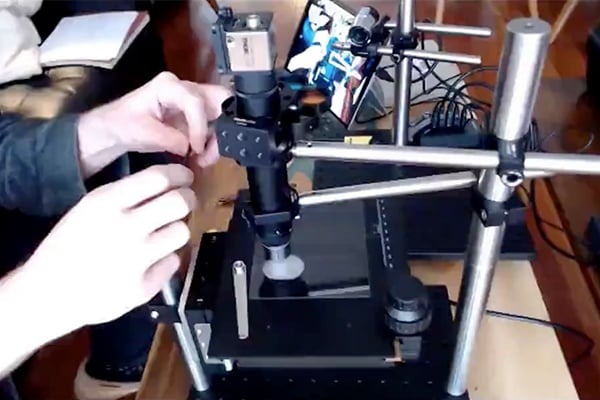When Johns Hopkins University announced the transition to remote learning in response to the COVID-19 pandemic this past March, Web Stayman, associate professor of biomedical engineering, had just one week to transform his in-person, project-based Build an Imager course into a completely virtual, interactive experience.
During normal times, Build an Imager students work in groups to engage in hands-on experiments, using basic optical elements such as microscope lenses, optical tubes, and a scientific digital camera to build an imaging system from scratch. After learning imaging concepts and theory through group discussion, students construct imaging systems, program devices, take measurements, perform specific experiments, and analyze their results.
Because the hardware required for this course is bulky and available in limited quantities, shipping materials to the students was not an option for the transition to a virtual format. Instead, Stayman and Grace Gang, assistant research professor of biomedical engineering and co-instructor for this course, each brought home a microscope kit, and created a staging area with multiple cameras that they used to film themselves while working on their imaging setups.
“We kept a similar course format, beginning each class with a discussion, but instead of having the students build the imaging system themselves, the instructors acted as the hands for the students,” explained Stayman. “We would ask students what to do next, what each component does, how the experiments should be conducted, and how to interpret the results.”

